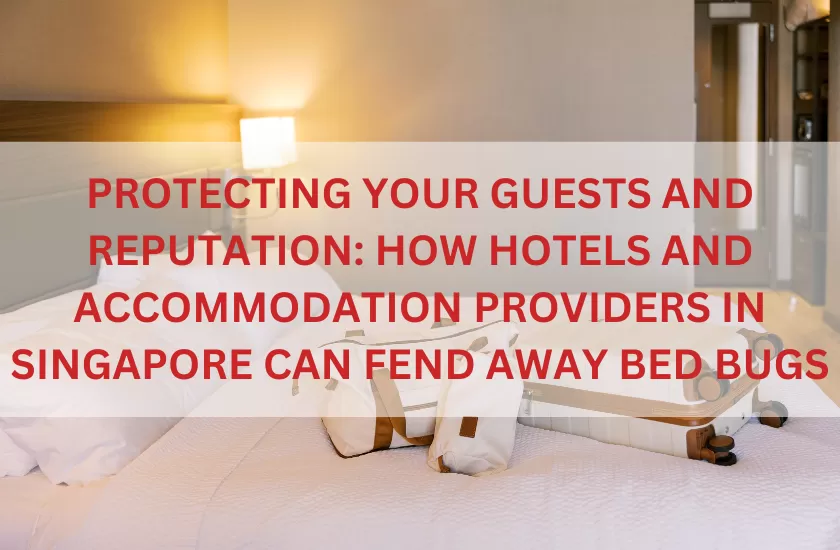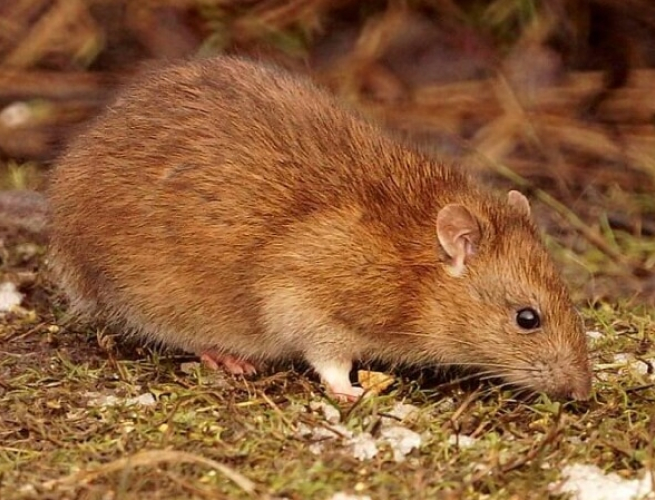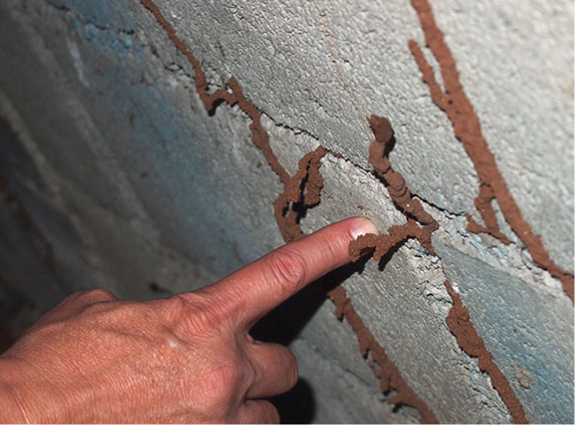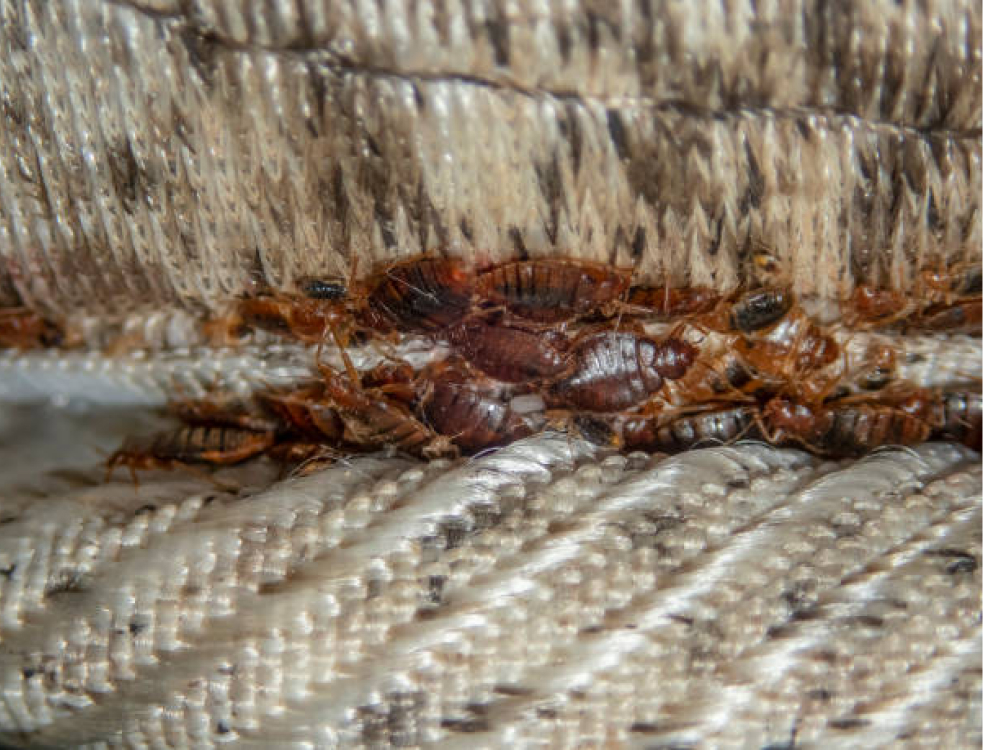In the competitive hospitality industry, maintaining a pristine reputation is paramount for hotels and accommodation providers. One of the most insidious threats to this reputation is the presence of bed bugs. These tiny, nocturnal pests can cause significant distress to guests and severe damage to an establishment’s standing. In Singapore, a bustling hub of tourism and business travel, ensuring a bed bug-free environment is crucial. This comprehensive guide explores the strategies and best practices for preventing bed bug infestations in hotels and accommodations, safeguarding both guests and the establishment’s reputation.
Understanding Bed Bugs
1) Biology and Behavior
Bed bugs (Cimex lectularius) are small, reddish-brown insects that feed on the blood of humans and animals. They are wingless, about 4-5 mm long, and can survive for months without feeding. Bed bugs are nocturnal, hiding during the day in cracks and crevices, including mattress seams, bed frames, and furniture. Their elusive nature and ability to reproduce rapidly make them challenging to eradicate once an infestation takes hold.
2) Signs of Infestation
Recognizing the signs of a bed bug infestation early is critical for prevention. Common indicators include:
- Bite Marks: Small, red, itchy welts on the skin, often in a linear or clustered pattern.
- Blood Stains: Small spots of blood on sheets, pillowcases, and mattresses.
- Fecal Spots: Tiny, dark spots resembling ink stains on bedding and furniture.
- Shed Skins: Exoskeletons left behind as bed bugs grow.
- Musty Odor: A sweet, musty smell in heavily infested areas.
3) Prevention Strategies
Staff Training and Awareness
Effective bed bug prevention begins with a well-informed and vigilant staff. Training should cover:
- Identification: Recognizing the signs of bed bugs and understanding their biology.
- Inspection: Regularly check rooms, especially high-risk areas such as mattresses, headboards, and furniture.
- Reporting: Clear protocols for reporting suspected infestations to management promptly.
- Training: Regular training sessions and updates on best practices can keep staff alert and knowledgeable.
Routine Inspections
Implementing a rigorous inspection schedule is crucial. Inspections should be conducted:
- Between Guest Stays: Thoroughly inspect rooms after each guest checks out.
- Weekly: Conduct more detailed inspections on a weekly basis, including behind wall hangings, in electrical outlets, and under furniture.
- Monthly: Comprehensive inspections of the entire property, including common areas and staff quarters.
Using tools like flashlights and magnifying glasses can help spot early signs of infestation.
Integrated Pest Management (IPM)
An Integrated Pest Management (IPM) approach combines various strategies to prevent and control bed bugs. Key components include:
- Sanitation: Regularly clean and vacuum rooms to remove potential hiding places.
- Encasements: Use bed bug-proof mattress and box spring encasements to prevent infestations.
- Physical Barriers: Sealing cracks and crevices in walls, floors, and furniture to eliminate hiding spots.
- Chemical Treatments: Judicious use of insecticides, applied by licensed professionals, to treat infested areas.
Guest Engagement
Guests can unknowingly introduce bed bugs into a hotel. Encourage guests to:
- Report Issues: Promptly report any signs of bed bugs to hotel staff.
- Inspect Luggage: Check luggage and clothing for bed bugs before and after travel.
- Use Luggage Racks: Keep luggage off beds and floors by using provided racks.
Providing informational materials and signage can raise awareness and cooperation.
Technological Solutions
1) Heat Treatments
Heat treatments are an effective, non-chemical method for eliminating bed bugs. Rooms are heated to temperatures lethal to bed bugs (around 45-50°C) for several hours. This method is particularly useful for treating infested rooms quickly and safely.
2) Monitoring Devices
Several monitoring devices can help detect bed bugs early:
- Interceptor Traps: Placed under bed legs, these traps catch bed bugs as they move.
- Glue Traps: Sticky traps placed in strategic locations to capture bed bugs.
- Electronic Monitors: Devices that use heat, carbon dioxide, or pheromones to attract and trap bed bugs.
Regular monitoring can provide early warning of infestations, allowing for prompt action.
Responding to Infestations
Despite best efforts, infestations can occur. A swift and effective response is essential to minimize damage to reputation and guest satisfaction.
1) Isolation and Inspection
Immediately isolate the affected room and any adjacent rooms. Conduct a thorough inspection to determine the extent of the infestation. Check all potential hiding places, including behind baseboards, inside electrical outlets, and within furniture joints.
2) Professional Extermination
Engage a licensed pest control professional to handle the infestation. Treatments may include:
- Chemical Treatments: Targeted use of insecticides in infested areas.
- Heat Treatments: As mentioned earlier, heat is used to eradicate bed bugs.
- Fumigation: In severe cases, fumigation may be necessary to eliminate bed bugs from the entire property.
Ensure that the pest control company follows up with additional inspections and treatments as needed.
3) Post-Treatment Monitoring
After treatment, continue monitoring the affected areas to ensure the infestation has been eradicated. Use interceptor traps, glue traps, and electronic monitors to detect any remaining bed bugs. Conduct follow-up inspections and treatments if necessary.
4) Reputation Management
i) Transparent Communication
Effective communication with guests is crucial in managing an infestation and protecting your reputation. Should a guest report any sighting of bed bugs:
- Acknowledge the Issue: Thank the guest for bringing the issue to your attention and apologize for the inconvenience.
- Provide Solutions: Offer alternative accommodations or compensation as appropriate.
- Inform Guests: Explain the steps being taken to address the infestation and ensure their safety and comfort.
Transparency and prompt action can help mitigate negative reviews and maintain trust.
ii) Online Reviews and Social Media
Monitor online reviews and social media channels for mentions of bed bugs. Respond to negative reviews professionally and promptly:
- Acknowledge the Complaint: Thank the reviewer for their feedback and apologize for their experience.
- Explain Actions: Describe the steps taken to address the issue and prevent future occurrences.
- Invite Direct Communication: Encourage the reviewer to contact management directly to resolve the matter.
Proactive engagement can demonstrate your commitment to guest satisfaction and mitigate reputational damage.
Case Studies and Best Practices
International Examples
Several hotels worldwide have implemented effective bed bug prevention programs. Learning from their experiences can provide valuable insights:
- The Waldorf Astoria, New York: This iconic hotel uses canine inspection teams to detect bed bugs early. Regular staff training and guest education are also key components of their prevention strategy.
- Hilton Hotels: Hilton has developed a comprehensive bed bug management program, including rigorous inspections, staff training, and the use of monitoring devices. Their proactive approach has significantly reduced bed bug incidents across their properties.
Local Success Stories
Singaporean hotels can also draw inspiration from successful local initiatives:
- Marina Bay Sands: This luxury hotel employs an integrated pest management approach, combining regular inspections, staff training, and advanced monitoring technologies. Their commitment to a bed bug-free environment has bolstered their reputation as a premier destination.
- Raffles Hotel: With a focus on guest satisfaction and proactive pest management, Raffles Hotel has implemented stringent inspection and treatment protocols. Their efforts have resulted in high guest satisfaction and minimal bed bug incidents.
Conclusion
Preventing bed bugs in hotels and accommodation providers in Singapore requires a multifaceted approach. Staff training, routine inspections, integrated pest management, and technological solutions are all critical components. By engaging guests, responding swiftly to infestations, and managing reputation effectively, hotels can maintain a bed bug-free environment and protect their reputation. With diligent effort and a commitment to best practices, Singaporean hotels can ensure a safe and comfortable experience for all guests, preserving their status as world-class accommodations.
Implementing these strategies not only safeguards the health and well-being of guests but also reinforces the establishment’s commitment to excellence. In an industry where reputation is everything, a proactive and comprehensive bed bug prevention plan is an investment in the future success and sustainability of any hotel or accommodation provider in Singapore.







